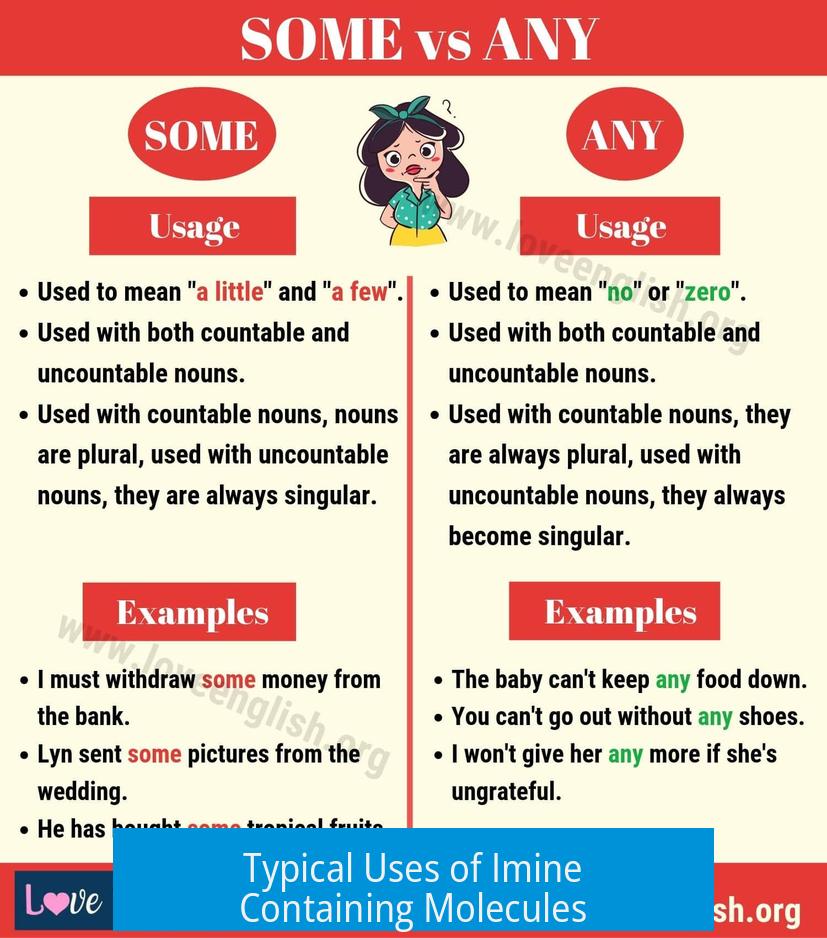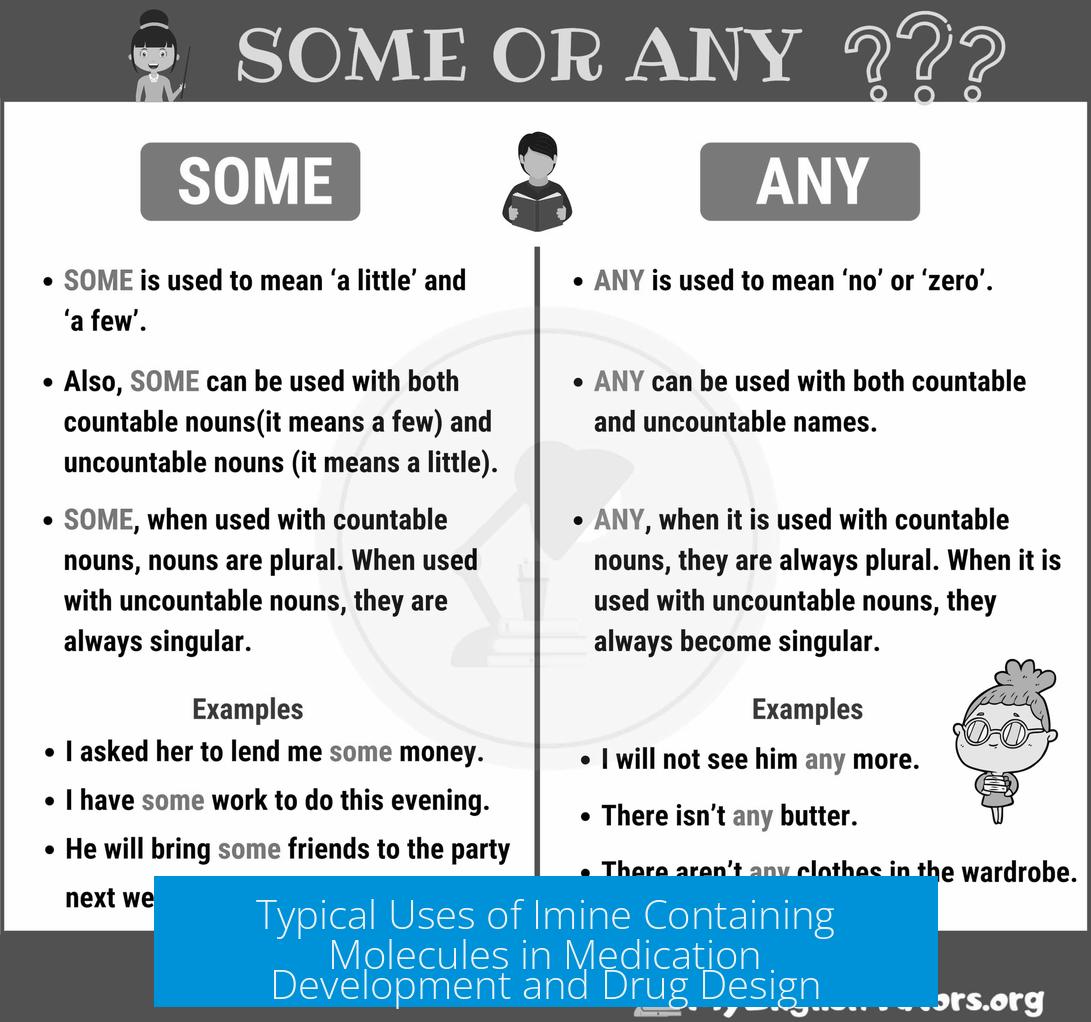Typical Uses of Imine Containing Molecules

Imine containing molecules are primarily used as key intermediates in medicinal chemistry but are rarely found intact in marketed drugs due to stability issues. Their main application lies in the synthesis of complex molecules, especially those containing nitrogen atoms.
Synthetic Role in Medication Development
Imines facilitate the creation of N-heterocyclic compounds, which are vital scaffolds in many pharmaceuticals. They also help introduce amine groups—functionalities critical for biological activity in drugs.
- Serve as intermediates in constructing nitrogen-containing rings.
- Enable modification of molecular frameworks through imine formation and reduction.
- Allow for the synthesis of diverse amine derivatives important in drug design.
Limited Direct Use in Drugs
Despite their synthetic utility, imines are infrequently used as stable components in therapeutic agents. Simple imines tend to hydrolyze in aqueous and acidic environments, such as the stomach.
This instability results from their susceptibility to protonation and subsequent cleavage, transforming imines back to their carbonyl and amine precursors. Therefore, they fail to persist in physiological conditions, limiting their direct pharmaceutical use.
Stable Related Functional Groups in Drugs
Chemists often use more stable imine derivatives like oximes and hydrazones instead. These compounds resist hydrolysis better and appear in several clinically approved drugs.
| Imine Derivative | Drug Example | Property |
|---|---|---|
| Oximes | Roxithromycin | More hydrolysis-resistant than simple imines |
| Hydrazones | Nitrofurantoin | Stable and bioactive imine derivatives |
Summary Points
- Imines mainly act as synthetic intermediates in drug development.
- They form N-heterocycles and amines critical for medicinal chemistry.
- Simple imines are unstable under physiological (acidic/aquous) conditions.
- Direct use of intact imines in marketed drugs is rare.
- Oximes and hydrazones offer more stable alternatives in pharmaceuticals.
What role do imine-containing molecules play in drug synthesis?
Imines act as key intermediates in making medicines. They help build N-heterocycles and add amine groups which are important in many drugs.
Why are simple imine groups rarely found in marketed drugs?
Simple imines are unstable in acidic and watery environments like the stomach. This causes them to break down, making them unsuitable for stable drugs.
Are there more stable imine-related groups used in pharmaceuticals?
Yes. Oximes and hydrazones, which are related to imines, are more stable and appear in drugs such as Roxithromycin and Nitrofurantoin.
How do oximes and hydrazones compare to imines in drug use?
Oximes and hydrazones resist hydrolysis better than simple imines. This stability allows their incorporation into several clinically used medicines.





Leave a Comment